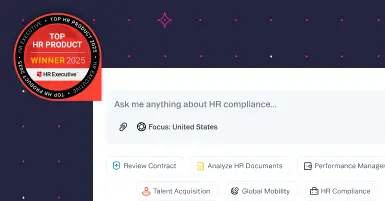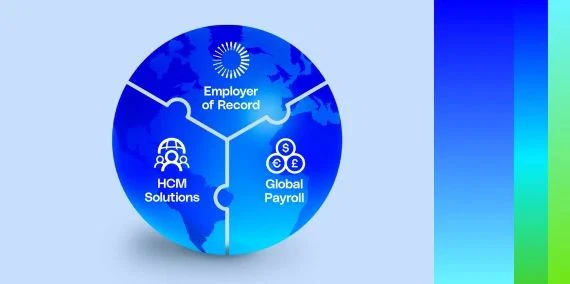“Location is everything.” You hear it all the time in business and real estate. The same goes for global hiring: choosing the right country is critical. Companies often base their decision on talent affordability, but global expansion shouldn’t be a race to the bottom of the salary barrel. A data-driven methodology that balances opportunity with operational risk has to come into consideration. Because while a market can seem budget-friendly, there are other hidden challenges that can lurk beneath the surface and sink your profitability.
The best countries for global hiring give you access to skilled talent — without the operational surprises. Successfully hiring remote employees in other countries requires a data-driven methodology that balances opportunity with operational risk. This guide explains how to choose a country for global expansion.
The hidden cost of the low salary trap
Choosing a country based on its low salary benchmark is the fastest route to failure. While paying a USD 50,000 salary in an emerging market looks appealing compared to a USD 150,000 salary in Silicon Valley, hidden costs can quickly add up:
-
High attrition: If your competitors are tapping into the same market, bidding wars can inflate salaries and lead to high employee turnover. This means you’re constantly retraining new professionals, which costs time and money. For instance, several U.S. and European companies have set up operations in Bengaluru (Bangalore), India, spiking the demand for experienced software engineers and IT professionals. Attrition rates have been reported as high as 20–30% annually.
-
Legal landmines: Complexity can start on day one of hiring your employee. Employers have to deal with obstacles like registering mandatory benefits, handling union notifications, and navigating employment contract structures. Beyond that, highly protective labor laws can make termination expensive. French labor laws are highly protective of employees, for instance. Employers have to follow strict procedures, provide documented reasons, and often pay severance. Employees can challenge the termination in labor courts. This can result in reinstatement orders or additional compensation, quickly turning a low-salary hire into an unexpected legal expense.
-
Infrastructure deficits: Unreliable power grids, slow internet, and weak local vendor support can create operational friction for your teams.
The 5 factors for international hiring locations
Here are five core factors that can help you evaluate a potential market:
1. Talent supply: availability and competition
Talent supply is about density and competition for niche skills.
-
Are the skills you need available? Focus on the specific expertise you need. For example, a multinational company looking to build a cloud-native infrastructure in Brazil can find that, despite the country’s thousands of IT graduates each year, only a small fraction have hands-on experience with advanced DevOps tools and specific cloud platforms.
-
What’s the unemployment rate in your industry? If there aren’t many unemployed people in a specific industry, you'll face tough competition for skilled workers. And salaries will likely be higher regardless of the country's economic situation.
-
How many companies compete for the same people? If the top five global and local competitors are already ingrained, your speed-to-hire and cost-to-hire metrics will suffer.
2. Cost factors: total cost to employ (TCE)
TCE represents the full financial burden of hiring an employee.
-
What are typical salaries for your roles? Gather current, localized salary data for a direct comparison.
-
What benefits do workers expect? In many regions, such as Latin America or the EU, generous severance, long notice periods, and 13th- or 14th-month bonuses are standard expectations. These additions can add 20–50% to the base salary.
-
What’s the employer burden rate? This figure includes costs triggered on top of salaries.
3. Communication ease: time zone, tone, and language
A distributed team has to be able to communicate effectively. This is key for your team’s productivity.
-
Do people speak your company’s language? Look for high proficiency in your company’s main language, especially in technical fields.
-
Is the time zone good for your team calls? A good time zone means fewer late-night calls for you and your team.
-
Will communication styles work with your culture? Cultural factors dictate how direct or indirect feedback is delivered. You need to know if their culture will mix well with your team’s management style.
4. Legal friendliness: compliance and risk
The legal environment is where the largest, most unpredictable costs are. Compliance is critical when hiring remote employees in other countries. Getting this wrong exposes you to big fines.
-
How hard is it to onboard and offboard? Countries with high labor protections make termination complex and expensive. For example, in the Netherlands, terminations require the involvement and approval of local authorities, a process that can take up to five months.
-
Are labor unions or worker associations common? Their presence can affect company policies and wages. In Germany’s automotive industry, collective bargaining agreements (CBAs) play a big role in determining wages, working hours, and protections against layoffs.
-
Are there strict rules about data privacy and storage? In the EU, companies have to make sure data about EU residents is stored within the EU or in countries with adequate data protection standards. So a U.S.-based company expanding into Germany can need to set up or rent server space in Germany or the EU to comply with GDPR.
5. Business strategy fit: alignment with growth
When you’re hiring globally, the location you choose has to serve your company's macro-strategy.
-
Does this match where you want to grow? If your future market is Asia, a hiring hub in Vietnam serves two purposes: talent acquisition and market intelligence. This saves you time and resources later on.
-
Are your customers nearby? Placing sales and customer success teams closer to key markets makes sure they get better language support and real-time service.
-
Can you find good partners and vendors there? A mature ecosystem of local recruiters, legal counsel, and payroll providers is important for scaling quickly.
Talent heatmaps by role: best countries for global hiring
We've identified specific regions that excel for certain roles.
|
Role |
Traditional hubs (mature, high-cost) |
Emerging strength (rising quality, mid-cost) |
Cost-effective scale (high volume, low-cost) |
|
Engineering and development |
EU, U.S., Canada, Australia |
Poland, Romania, Brazil, Mexico, Argentina, Colombia |
India, Philippines, Vietnam, Ukraine |
|
Customer success and support |
Philippines, Ireland, Portugal |
Colombia, South Africa |
Mexico |
|
Digital marketing |
U.K., U.S., Canada, Australia |
Germany, Brazil, Mexico, Colombia, Poland, Spain |
Philippines, India, South Africa, Nigeria |
|
Design |
U.K., U.S., Germany, Italy, Japan |
Poland, Ukraine, Brazil, Mexico, Vietnam, Philippines |
Poland, Ukraine, Brazil, Mexico, Vietnam, Philippines |
|
Sales |
Ireland, Portugal, Colombia, Philippines, South Africa |
Mexico, Brazil, Poland, Romania |
South Africa, Argentina, India |
Other key trends and insights:
-
Nearshoring dominance: For North American companies, Mexico and Brazil are great nearshoring destinations. They offer strong talent across all categories with little to no time zone offset.
-
The European tech corridor: Poland and Romania are consistently cited as the best countries for specialized engineering and financial roles. They offer world-class technical education and strong English proficiency.
-
The Role of EORs: If you want to validate these insights and test a specific market, you can partner with an employer of record (EOR). An EOR allows you to hire employees instantly without establishing a costly legal entity.
Make your location decision measurable
To master the art of how to choose a country for global expansion, replace subjectivity with an objective scorecard. This tool transforms the five strategic pillars into a clear numerical comparison.
The strategic location scorecard
For each location, assign a score from 1 to 5 in each category (1 = poor match, 5 = excellent match). For example:
|
Category |
Country A |
Country B |
Country C |
|
Talent access |
4 |
5 |
3 |
|
Cost efficiency |
5 |
4 |
3 |
|
Time zone alignment |
2 |
4 |
5 |
|
Legal complexity |
3 |
4 |
3 |
|
Strategic alignment |
4 |
3 |
5 |
|
Total score |
18 |
20 |
19 |
In this sample scenario, while Country A offers the best cost efficiency, Country B’s stronger scores in talent access, time zone alignment, and legal complexity make it the lower-risk and more strategically aligned choice.
By using this multifactor approach, your decision is based on measurable data — not guesswork.
How G-P can help
Choosing a country for expansion is no longer a race to the bottom of the salary barrel. It’s a strategic decision based on talent supply, cost factors, communication ease, legal friendliness, and business strategy fit.
As the recognized leader in global employment, G-P helps companies of all sizes hire, onboard, and manage global teams in 180+ countries, regardless of entity status. Our AI-powered global employment products and EOR solutions are backed by the largest team of in-country HR, legal, and compliance experts to streamline and simplify the entire global employment lifecycle. Get in touch today and book a demo.
Global expansion is complex. Skip the costly trial and error and get straight to success.
Download the complete Global Hiring Toolkit to unlock better talent, accelerate your market entry, and avoid the hidden operational pitfalls.

















